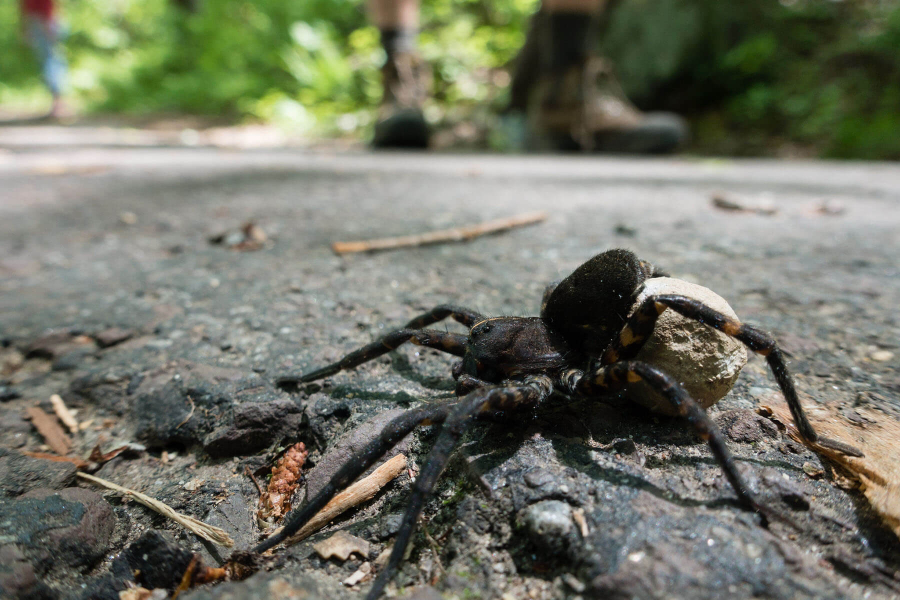Appearances can be deceiving

If you’ve ever noticed a wolf spider scuttling out from your drain pipe or peering up at you from your flower bed, your first instinct might have been to yell or squish it immediately. Wolf spiders have a nasty reputation for being aggressive, highly venomous pests, and there is a lot of stigma surrounding them. However, there is a lot more to the wolf spider than meets the eye.
Wolf spiders are among the most common spiders in the world. There are around 2,500 species of wolf spider, 125 of which can be found in the United States. Wolf spiders are generally brown or black in color and have dark, lengthwise stripes running down their backs. Their bodies, not including their legs, are relatively small, although females are larger than males. Females range from 5.1 to 6.4 millimeters in length, while males reach a maximum length of five millimeters.
Despite their bad reputation, wolf spiders have a soft side. Many species of spiders abandon their eggs immediately after laying them, but wolf spider females bundle their eggs in a tight, silken cocoon that they carry on their abdomens. Once the eggs hatch, she will carry her young—sometimes over 100—on her back for around a week, until they are mature enough to fend for themselves.
Wolf spiders are also invaluable environmental stewards, playing an important role in population control. They are voracious feeders, consuming as much as 12% of their body weight each day in ants, grasshoppers and other insects. They are especially valuable in areas of heavy agriculture, where they function as a form of pest control.
While wolf spiders are venomous, they are non-aggressive and generally will not bite you if left alone. However, a bite from a wolf spider—though generally not lethal—can be intensely painful and warrants immediate medical attention.
Not everyone can be expected to get a warm, fuzzy feeling when stumbling across a wolf spider in the wilderness. But next time you come across their eight-eyed gaze, consider giving a moment of thanks for the hard work they do for us every day—even if it’s from a few steps away.
Learn more about wolf spiders in our Field Guide.

Comments
Looking over the blog and our Field Guide entry, it became clear that our wording was confusing. When referring to the size of the spider, we meant just it's body—the two segments in the middle—and not the legs. With the legs, you're right, they are much larger than five or six millimeters! I've updated the blog and Field Guide entry to reflect that.
Sorry to be "that guy", but I felt compelled to point out an error in the size units given. I think you meant "cm", not "mm", for max sizes. I doubt most people would think of them as "relatively small" (except perhaps relative to a tarantula!).
Great pic!
Thank you!
Your comment has been received. Before it can be published, the comment will be reviewed by our team to ensure it adheres with our rules of engagement.
Back to recent stories